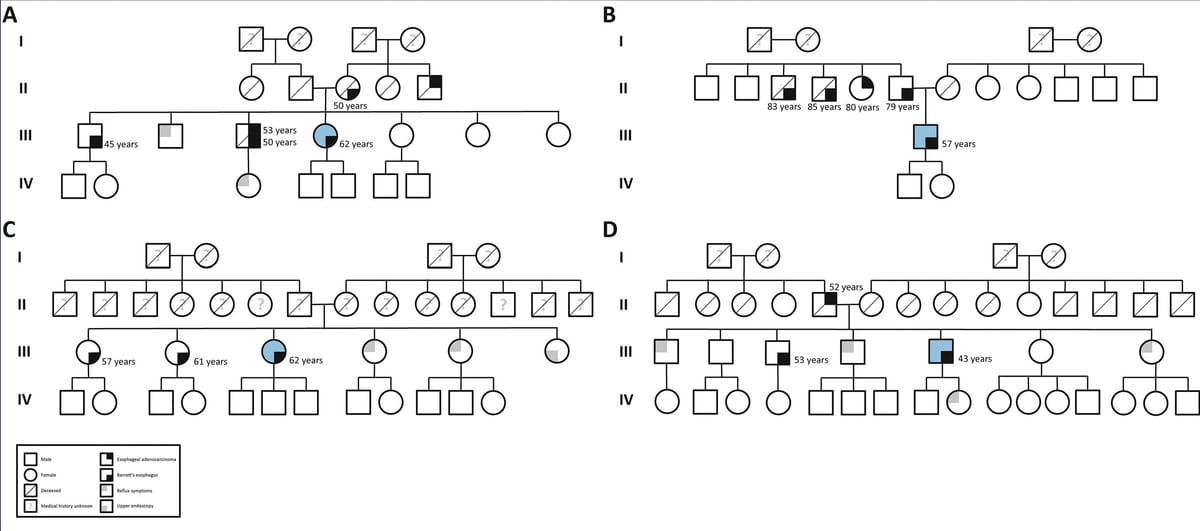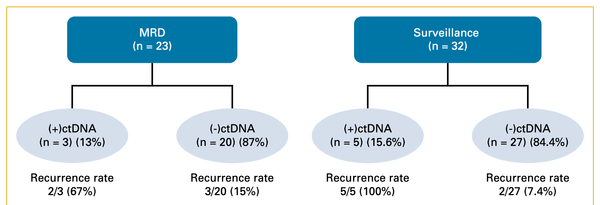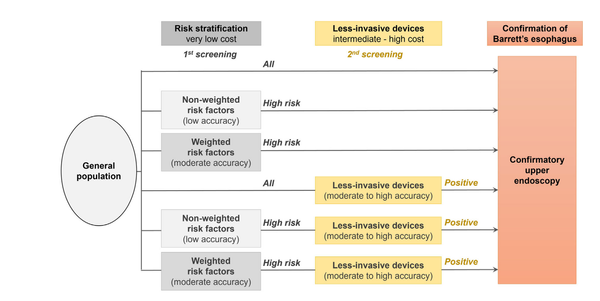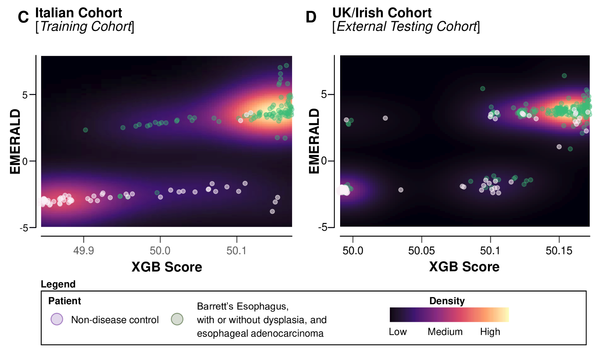Importance of family history in Barrett's and esophageal adenocarcinoma
Family history of Barrett's and/or EAC was determined in 480 BE patients and 420 controls and validated using the Dutch nationwide histopathology database. A positive family history was found in 6.5% of BE patients, which is consistent with other studies, yielding a five-fold increased risk.

Eur J Cancer. 2021 Sep;155:116-126.
doi: 10.1016/j.ejca.2021.07.007. Epub 2021 Aug 7.
Increased risk of Barrett's oesophagus and related neoplasia in individuals with a positive family history
Yonne Peters 1 , Lotte J Huibertse 2 , Ruud W M Schrauwen 3 , Adriaan C Tan 4 , Rachel S van der Post 5 , Peter D Siersema
PMID: 34375895 DOI: 10.1016/j.ejca.2021.07.007
Abstract
Background: Considering the poor prognosis of oesophageal adenocarcinoma (EAC), it is important to identify individuals at increased risk of developing EAC who may benefit from early detection and prevention strategies. We aimed to determine whether individuals with a positive family history of Barrett's oesophagus (BE) and EAC are at an increased risk of oesophageal neoplasia.
Methods: In a multi-centre case-control study, BE patients with or without related oesophageal neoplasia and randomly selected population controls filled out a questionnaire to collect information on family history and other risk factors for BE and EAC. Positive family history was defined as having =1 first-degree relative with BE or EAC whose diagnosis was histologically confirmed in the Dutch nationwide histopathology database.
Findings: We included 480 BE patients and 420 controls without BE who had a total of 6393 first-degree relatives. A pathologically confirmed positive family history was significantly higher in BE patients compared with controls (6.5% versus 0.9; p < 0.001). Positive family history was independently associated with an increased risk of BE (OR 5.04; 95% CI 1.45-17.58; p = 0.01) after adjusting for known risk factors, such as gastroesophageal reflux disease and body mass index, and family size.
Interpretation: We found that familial clustering of BE and EAC is present in 6.5% of Dutch BE patients. Subjects with =1 first-degree relative with BE or EAC have a 5-fold increased risk of BE and EAC. These findings emphasize the importance of a detailed family history in patients with BE or EAC to identify individuals at increased risk who may benefit from early detection strategies to prevent EAC-related mortality.




